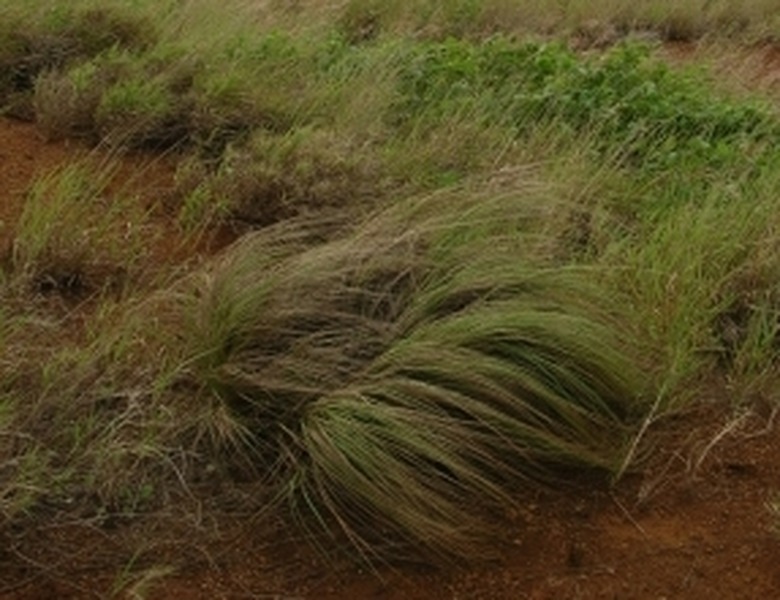How To Grow Weeping Lovegrass
Things Needed
- Plow or tiller
- Weeping lovegrass seeds or container plants
- Water source or irrigation system
- Shovel
- Organic material, if needed
Tip
If you plan to use a seed spreader, mix your seeds with cornmeal or sand to act as a carrier to help make sure your seeds get spread evenly across your seedbed.
Warning
The lower temperatures of winter can force lovegrass to act as an annual and not come back in the spring. Ask at your local garden center for information about how successful weeping lovegrass is for your region before you invest in it.
Used for erosion control on slopes and disturbed soils and used as an ornamental grass, weeping lovegrass, also known as African love grass, is easy to maintain. Found in the southern states of the United States, in zones 7 to 10, weeping lovegrass enjoys the warmth of summer and a mild cold in winter. A successful weeping lovegrass plant typically takes up a 3-by-3-foot space, with its drooping leaves giving it its "weeping" characteristic.
Starting with Seeds
Step 1
Prepare a seedbed for your seeds by plowing or tilling the area where you want to control erosion or renew growth. Using 3 to 5 lbs. of seed per acre, plant your seeds ¼ inch deep on silt loams or ½ to 1 inch deep if you have more sandy soil.
Step 2
Lightly water your seedbed daily to maintain a moist soil. Regular watering should continue for the first four weeks; after that, weekly watering should be sufficient to keep the seedlings growing.
- Used for erosion control on slopes and disturbed soils and used as an ornamental grass, weeping lovegrass, also known as African love grass, is easy to maintain.
- Prepare a seedbed for your seeds by plowing or tilling the area where you want to control erosion or renew growth.
Step 3
Keep any grazing livestock away from your seedlings as they grow. While some wildlife will be inclined to investigate this edible plant, the success of your weeping lovegrass will depend on keeping grazers out of the area.
Starting with Containers
Step 1
Select an area for ornamental lovegrass that has good drainage and is partly shaded and partly sunny. Light-textured soils tend to show better performance in plant growth, so add organic matter, such as compost or garden soil, if necessary to break up compact soils.
Step 2
Dig a hole at least 3 feet wide and as deep as the container.
Step 3
Remove the plant gently from the container and set it into the hole. The top of the root ball should come even with ground level. Fill in the hole with the disturbed soil and any mixtures of organic material.
- Keep any grazing livestock away from your seedlings as they grow.
- While some wildlife will be inclined to investigate this edible plant, the success of your weeping lovegrass will depend on keeping grazers out of the area.
Step 4
Water the plant well. Continue to monitor and water it weekly over the growing season. Regular water will keep the grass from drying out and will give a more lush and appealing look to the plant.
References
- USDA Fact Sheet
- Nevada Gardener's Guide; Linn Mills and Dick Post; 2005
